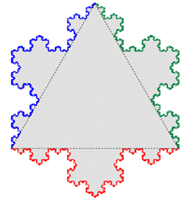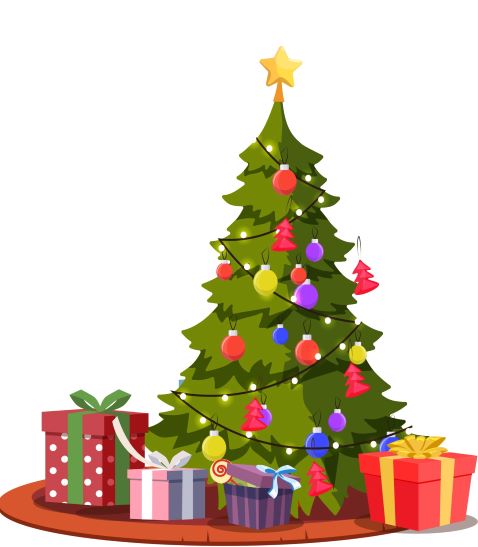

‘It’s the most wonderful time of the year.’ A time where our taste buds go on a whirlwind of emotions, from your mum’s imbuljuta to your grandma’s Christmas turkey. By the time you manage to get to dessert – the famous Christmas log full of delicious flavours – one feels ready to explode from all the various gastronomical tastes.
Whether we feel inclined to eat or not depends on the balance of activity between two sets of nerve cells also referred to as neurons. These neurons are dominated by hormones that circulate in our blood, for example ghrelin and amylin. Some are found in the stomach, some in the colon or bowel or pancreas. While ghrelin and insulin stimulate hunger, the peptide hormones are used to help with the sensation of fullness when food reaches the gut.
This means that at the beginning of the meal, the hormones stimulating hunger enter the brain and act on the nerve cells in the hypothalamus, part of the brain that controls the production of hormones in your body. This increases the activity of the hunger-causing nerve cells and minimises the activity of hunger-inhibiting cells. Essentially, your stomach and intestines start giving you hints on when they’re full. However, if we’re fully engrossed in what our families have prepared for us, we might not be giving our bodies enough time to register that one is actually full. So one goes for that second helping, or third…
Our stomach has very active muscles that are able to expand and contract, depending on how much food is in it. The contraction helps with the mechanical breakdown of the food present in the stomach so as to increase the available surface area for the chemicals to act on it. Enzymes and acid are all part of this dance to chemically break down the food, which leaves the stomach to enter the small intestine through the process of peristalsis.
By the time that our bodies catch up with our mouths, everyone round the dinner table is exhausted from all the delightful food.
One feels like a nap is a must, and it is not your imagination, your body is actually craving a nap after a big meal. The reason for this is that your small intestine sends the message to your brain that rest is needed so as to digest the food. The insulin levels may also rise to try to remove all that extra sugar from your bloodstream, increasing your overall tiredness.
The good news is that all the hormones gradually return to their fasting levels three to four hours after a meal, which means that you’re just in time for some evening ‘snacks’ that your family insist on taking home as, can one believe it, there are still leftovers.
• Christmas tree lights were first introduced by Thomas Edison’s assistant, Edward Johnsons.
• Electric Christmas lights were first mass-produced in 1890.
• Christmas trees are extremely flammable as they contain the molecule pinene which is found in pine trees and gives their special smell.
• Poinsettias come in different colours: red, white, pink, burgundy, marbled and speckled.
• Pine cones are the female part that hold all the Christmas tree’s seeds, while the pollen created will be distributed via wind or passing animals.
• The story of Rudolph the red-nosed reindeer is well known. A study was conducted to understand the optical benefits of a shiny red nose on a foggy Christmas eve. The arctic reindeer is able to see ultraviolet light which is extremely important in mid-winter when the sun is low on the horizon and the light is scattered mainly in the blueish and ultraviolet region. Something that helps the reindeer see blue light at night is the reflective tissue in its eyes which changes to a deep blue colour during the winter months. So what if Santa’s reindeer would still find it difficult to fly as fog extinguishes blue light more than red light? This is where Rudolph’s red nose helps in guiding his fellow reindeer. Rudolph’s nose is similar to holly berries, which is probably the maximum level of red that mammals are able to view.
https://www.sciencedaily.com/releases/2015/12/151221194132.htm
• Reindeer, often portrayed as pulling Santa Claus’s sleigh, are shrinking due to the impact of climate change on their food supplies. Since we are experiencing warmer winters, rain has increased. The rain that falls on snow freezes, restricting the reindeer from access to the food beneath the snow. The Arctic has become noticeably warmer and the reindeer on Svalbard have even decreased in size and weight. Another factor responsible for the shrinking reindeer is that reindeer numbers have doubled, which leads to greater competition for food during the winter months. This could lead to smaller reindeer in the Arctic in the coming decades.
https://www.sciencedaily.com/releases/2016/12/161212084646.htm
This article was published on 24 December 2017 by Danielle Martine Farrugia on timesofmalta.com
Snow at Christmas is a rare if not impossible sight in Malta, and yet it remains present in our imagination. Nothing depicts Christmas better than a picture-postcard snow scene or the snowflake lights and tree decorations. Next time you have the chance, take a few minutes to admire the individual snowflakes, their beautiful and fascinating intricate patterns. Fractal geometry helps explain the shapes of the snowflakes. A Swedish mathematician, Helge von Koch, created the Koch snowflake in 1904. The boundary of this snowflake consists of three copies of the Koch curve placed around the three sides of the initial equilateral triangle and facing outwards.

Not only that the Christmas of our dreams is white, but it also comes with lots of gifts under the tree. But how many gifts will you expect? If we were to follow the English song “The twelve days of Christmas”, on the first day you receive one gift (“a partridge in a pear tree”), on the second day you receive three gifts (“two turtle doves and a partridge in a pear tree”), six gifts on the third day (“three French hens, two turtle doves and a partridge in a pear tree”), ten gifts altogether on the fourth day (“four calling birds, three French hens, two turtle doves and a partridge in a pear tree”), and so on… . Therefore, 1, 3, 6, 10, 15, 21, … is a sequence of triangular numbers that specifies the number of gifts received each day. If we denote by  the number of gifts received on the th day, then this sequence can be expressed mathematically as
the number of gifts received on the th day, then this sequence can be expressed mathematically as  for , with . You may figure out how many gifts you should expect each day of Christmas by writing explicitly the terms of the sequence until the twelfth one… This process could be a little bit tedious, but thank goodness that there are only twelve days! Alternatively, you may use the non-recursive formula
for , with . You may figure out how many gifts you should expect each day of Christmas by writing explicitly the terms of the sequence until the twelfth one… This process could be a little bit tedious, but thank goodness that there are only twelve days! Alternatively, you may use the non-recursive formula  . Either way, you should expect to receive 78 gifts on the twelfth day of Christmas. Merry Christmas, everyone!
. Either way, you should expect to receive 78 gifts on the twelfth day of Christmas. Merry Christmas, everyone!

Christmas Eve is fast approaching. Santa’s elves are working hard to pack presents into Santa’s sleigh which has a certain weight limit, that cannot be exceeded. The elves are worried because most children have been nice this year and the list of requested presents is too long for all of them to fit in the sleigh!
Each present has an associated weight and a number of points. The latter is assigned by Santa himself and depends on how nice the child requesting that present has been throughout this year. The elves’ task is to pack as many presents as possible in the sleigh. In this way, the total number of points is maximised, whilst adhering to the sleigh’s weight limit.
This optimisation problem is the so-called Knapsack Problem. It is a surprisingly difficult problem to solve, and it becomes more complex as the number of requested presents increases. Remember that the elves need to find a selection of presents such that no other selection has a higher total number of points! Since the list of presents is very long, the elves do not have time to try all possible combinations of presents in order to identify the best selection. Such a full enumeration scheme is impractical for NP-Hard problems like the Knapsack Problem.
NP-Hard problems are problems for which no one has managed to find an algorithm that can produce, in reasonable computational time, an optimal solution to any instance of the problem (any number of presents in this context). In fact, finding an efficient algorithm for solving an NP-Hard problem is one of the famous Millennium Problems and anyone who manages to do so will be rewarded one million dollars! Imagine the amount of presents that you can buy!